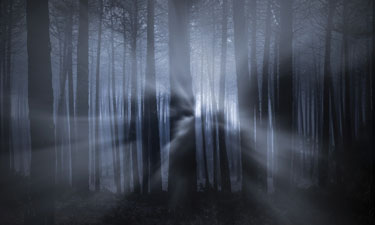 I want to tell you that if you want to stay healthy, don’t go in the woods.This may come as a surprise to some of you who have been reading my columns and articles about the true joy of being in nature. Well, I have reconsidered, and I’ll tell you why.
I want to tell you that if you want to stay healthy, don’t go in the woods.This may come as a surprise to some of you who have been reading my columns and articles about the true joy of being in nature. Well, I have reconsidered, and I’ll tell you why.
You can’t believe all the hazards you will encounter when you go for a walk in the woods. There are so many things to fear about being out in nature that I can hardly list them all. First, there is poison ivy everywhere. You know, “leaves of three, let it be.” What a joke. You can’t “let it be.” It will find you and rub up against you even if you are walking sideways. The woods are so thick with poison ivy vines that they kill the trees and stand by themselves waving and swaying in the breeze, just waiting to fall on you and rub all over you if you even venture into the woods.
And snakes, oh my gosh, everywhere you look — under a fallen rotted tree, flipping over a big rock, kicking through some leaves — big snakes, little snakes, brightly colored snakes, slithery midnight-black snakes. They are everywhere.
Don’t forget about insects. They are the worst! There are so many kinds, I can’t believe how some people find them fascinating. Ticks hang off the tips of tree leaves or hungrily wait perched on the tops of tall grasses, just waiting to latch onto you, bite and not let go! I shiver just to think about it.
And chiggers, biting flies, mosquitoes — all standing by for their chance to get in your hair or on your body. They’ll land right on you and you don’t even know it until they sink their stinger or their proboscis, or whatever that thing is, in you! Gives me chills!
And bees, come on. There are bumblebees, honey bees, mason bees, listen to this — there is even a bee named the “confusing bee.” What is this? Talk about a bumbling bee. At least they are mostly dying off from pesticides, thank goodness. We ought to be spraying more of whatever that is that deep-sixes those nasty little buggers. I won’t even talk about wasps — what good are wasps? It’s not like they pollinate flowers or are vital to agriculture like bees — they just fly around with a chip on their shoulder waiting to plunge their one-inch long stinger into your soft parts. You have to have eyes in the back of your head!
Not to mention the diseases you can be exposed to while walking in the woods. Lyme disease, Zika virus disease, Chikungunya, West Nile virus — I could go on, believe me. You can make yourself sick just thinking about the ways you can get sick from spending time in the woods.
The wildlife you can see when you are walking in the woods — big deal. It’s just a bunch of deer and wild turkeys and great-horned owls and flying squirrels and song birds — you can see all that on TV. Same goes for the woodland wildflowers — columbine, Jack-in-the-pulpit, showy orchis, trillium, cardinal flower and the ferns like Lady fern, Maidenhair fern and Cinnamon fern. Go to a nursery if you want to see them. Oh, wait…you can’t see those in a commercial nursery — those flowers and ferns only grow in the woods. Well, so what, they’re no big deal. They only bloom once a year anyway.
Look, forget about the fact that medical research is now showing that walking in the woods actually produces calming brain waves in kids and adults. And, it just isn’t true that people’s creativity, productivity and general health are all improved by daily doses of nature, no matter what all that scientific evidence now claims. You can take drugs for all those benefits. And as far as physical health goes, you can cure obesity in many ways — surgery, for one. You simply don’t have to go on daily walks in nature.
Sure, there are some who say all these hazards can be easily avoided if you take your time, be aware and become a part of the natural environment in which you are walking. They say, just take a few precautions like wearing loose, long-sleeved lightweight clothing and sturdy shoes. Use bug spray, wear a hat and sunscreen when you need it, and learn what real hazards are from those who know how to avoid them.
Come on! You believe all this stuff? I know many parents and kids are starting to believe that this kind of activity actually does improve your physical, emotional and even spiritual health. Oh, spare me. Put the notions about health benefits and medical research findings of spending time in nature in the trash! You want to stay healthy, at least for a short while? Forget about walking in the woods.
Richard J. Dolesh is NRPA’s Vice President of Conservation and Parks.

